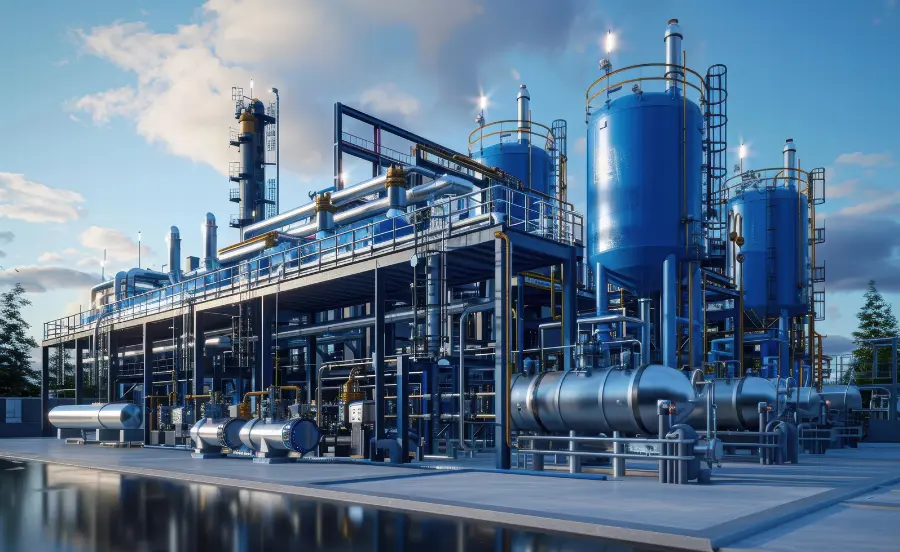Advanced Work Packaging (AWP) can accelerate hydrogen project delivery while reducing costs and risk, writes Olfa Hamdi
The global hydrogen sector is booming and changing fast, and companies that want to stay competitive are focused on cost reduction and predictable project delivery. This means leaders must find ways to reduce both construction costs (CapEx) and production costs (OpEx), while simultaneously delivering on-time and on-budget, all while working in a complex and fluid policy environment — it’s a juggling act, and it’s hard.
Advanced Work Packaging (AWP) for hydrogen construction projects can help. In today’s high-stakes energy landscape, investors and stakeholders demand certainty, and AWP offers a proven project delivery system that is already used in large-scale, complex construction projects around the world. From oil and gas to aerospace and infrastructure, AWP already helps companies deliver multi-billion dollar projects on-time and on-budget. In this article, I’ll make the case for adopting it for your next hydrogen construction project.
First, let’s establish what constitutes a successful hydrogen construction project. What are we aiming for? To my mind, successful projects:
- Are cost-competitive against alternatives;
- Demonstrate predictable outcomes that align with the business case(s);
- Achieve safe, on-time and on-budget construction; and
- Deliver reliable operation.
Advanced Work Packaging can help with all of these areas, and early adopters will get the advantage. Let’s take a look at the key AWP applications in hydrogen construction projects.
1 | The Application of AWP Fundamentals
Advanced Work Packaging is a construction-driven approach to capital project execution that centres the needs of construction teams at all stages of project development. The first step is to establish a Path of Construction (PoC), which is a detailed l plan that establishes the overall construction strategy and sequence, taking into account the project multi-faceted constraints. (It is important not to confuse the PoC with the critical path: the PoC establishes the construction strategy and sequence from which detailed schedules are developed, while the critical path emerges from the schedule analysis.)
The POC guides the breakdown of the project into Construction Work Areas (CWAs). These are discrete geographical areas that fit within the construction logic established by the PoC and take into account a comprehensive constraint analysis that is unique to hydrogen construction. From here, we begin packaging work into:
Engineering Work Packages (EWPs): A diverse set of engineering deliverables that are assembled to support a specified scope of construction work within CWAs.
Construction Work Packages (CWPs):Using the EWPs, the project team develops Construction Work Packages (CWPs) which provide the basis for discipline contractors to deliver effectively their scope of work.
Installation Work Packages (IWPs): Using the CWPs and the PoC for reference, the Workface Planners create reasonably sized packages of work and to sequence them in a way that supports timely, predictable project completion. The final work package created as part of the AWP process, IWPs contain all of the information that a single trade crew requires to complete a specified scope of work for a period of up to a week. Workface Planners use IWPs to create a constraint-free work environment by ensuring that crews have all the materials, equipment and information they need to execute each IWP.
This superstructure, combined with project delivery and fast-tracking Best Practices that make it work, when applied to hydrogen construction, has the power to markedly accelerate your project delivery while improving delivery — that’s the power of Advanced Work Packaging for hydrogen construction projects.

Accelerating Hydrogen Projects: Breaking Through Bottlenecks
Concord® CEO Olfa Hamdi explains why hydrogen construction projects are perpetually late and over-budget — and how to fix it
2 | Hydrogen-Specific Considerations for AWP
It’s important to consider the unique attributes of your hydrogen construction project, and to identify areas requiring specialized AWP approaches. Here are some common hydrogen-specific components to address in your work packaging process:
Safety Requirements: Typically, hydrogen projects have specialized safety requirements that need to be taken into account in the development of work packages.
Modularization Strategy: Most hydrogen projects also have a robust modularization strategy, manufacturing standardized, pre-engineered components off-site and assembling them at the project location. This will need to be accounted for in your work packages.
Specialized Equipment: Many hydrogen projects make use of specialized equipment that requires specific installation; you’ll want this documented in your PoC, scheduling and work packages.
Unique Systems: Hydrogen facilities have unique systems requirements, including specialized piping, electrical, and instrumentation needs. These must be integrated into all work packages, including EWPs, CWPs, and IWPs.
3 | AWP-Powered Project Integration and Coordination
Team integration and coordination is one of the most important benefits of Advanced Work Packaging for hydrogen construction projects. Mandatory, structured communication between engineering, procurement, and construction teams will break down silos and streamline the entire project lifecycle, driving on-time, on-budget project delivery. To attract these benefits, you’ll need to invest in training or hiring Workface Planners, schedulers and an AWP Champion.
While this adds cost in the short term, every dollar spent on your coordination and integration workforce will save you money in the long run. They’ll establish a trackable matrix for work packages, improve constraint management, and optimize materials management to improve installation efficiency. You’ll have a clear, bird’s-eye view of installation progress and performance — a true competitive advantage that allows you to pinpoint problems, quickly address challenges, and manage risk.
4 | For Large Owner Companies: Leverage Technology Integration
Companies that manage multiple hydrogen construction projects can achieve even greater efficiencies by integrating standardized technologies into the construction process.
For example, companies might start by implementing 3D modeling with Design Partitions to properly volume construction elements, essentially connecting engineering system optimization with EWPs. This modeling then connects directly to comprehensive Bills of Materials (BOMs), which in turn have Advanced Work Packaging attributes embedded within them. By assigning AWP characteristics to each material and equipment item in these data sheets, companies create crucial links between procurement and work execution.
For hydrogen development companies with multiple sites under construction, these investments in technology can deliver significant returns by enabling consistent, predictable delivery across their entire portfolio.
Getting Started with Advanced Work Packaging for Hydrogen Construction Projects
Advanced Work Packaging provides the structure, predictability, and efficiency necessary to make hydrogen projects both competitive and reliable. By embracing the principles of AWP, hydrogen construction leaders can overcome cost and predictability challenges and stay competitive in this fast-growing sector.
The first step toward implementing Advanced Work Packaging for hydrogen construction projects is to invest in training and certification for your team. Concord Academy offers self-paced, on-demand training and certification programs that are ISO-9001 certified and trusted by some of the world’s biggest capital construction companies. Once your team has the knowledge required to successfully implement AWP, you can begin by adopting AWP in one area of your project, eventually expanding to project-wide and company-wide implementation. Concord will be with you every step of the way — contact us today!





